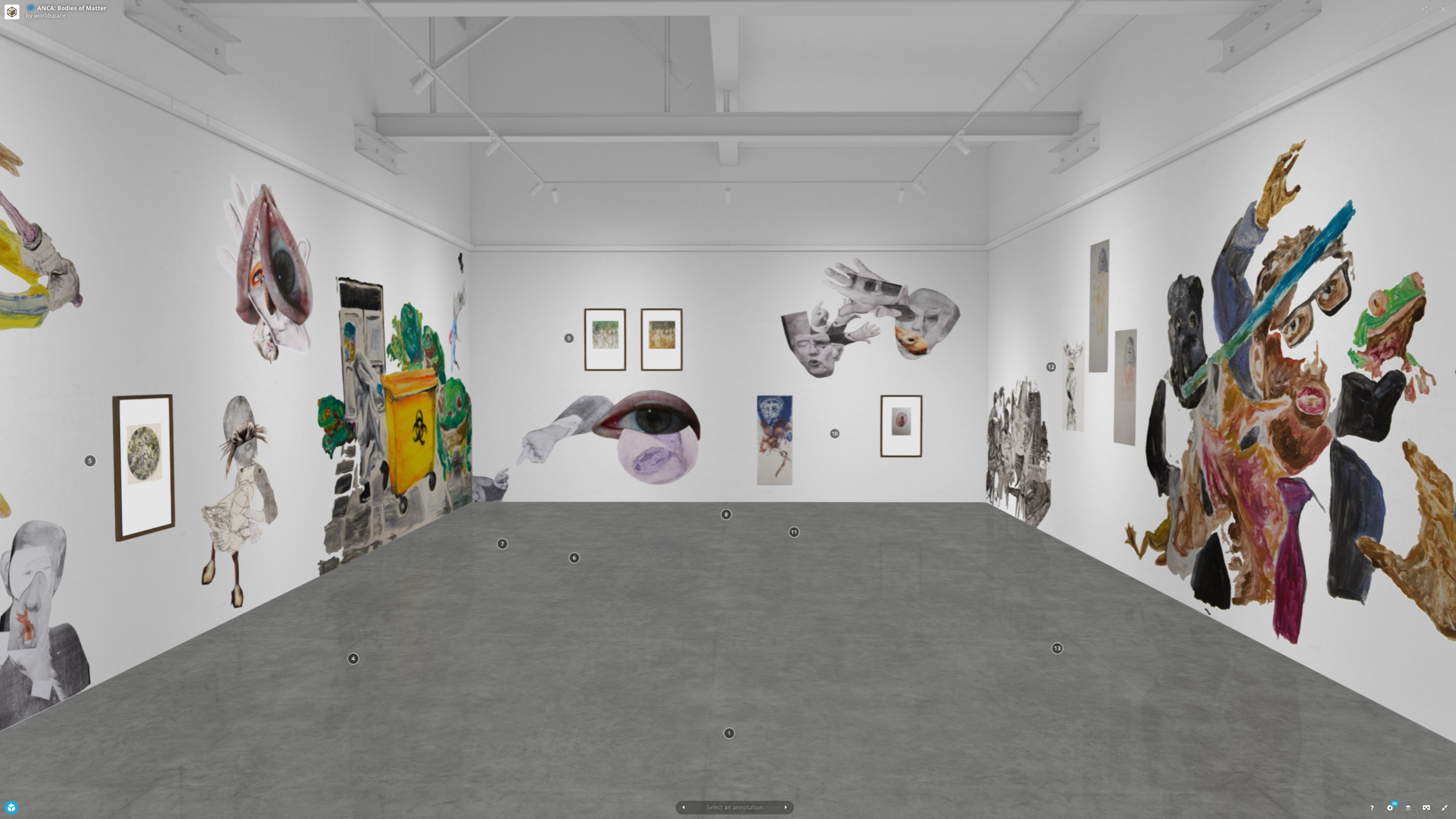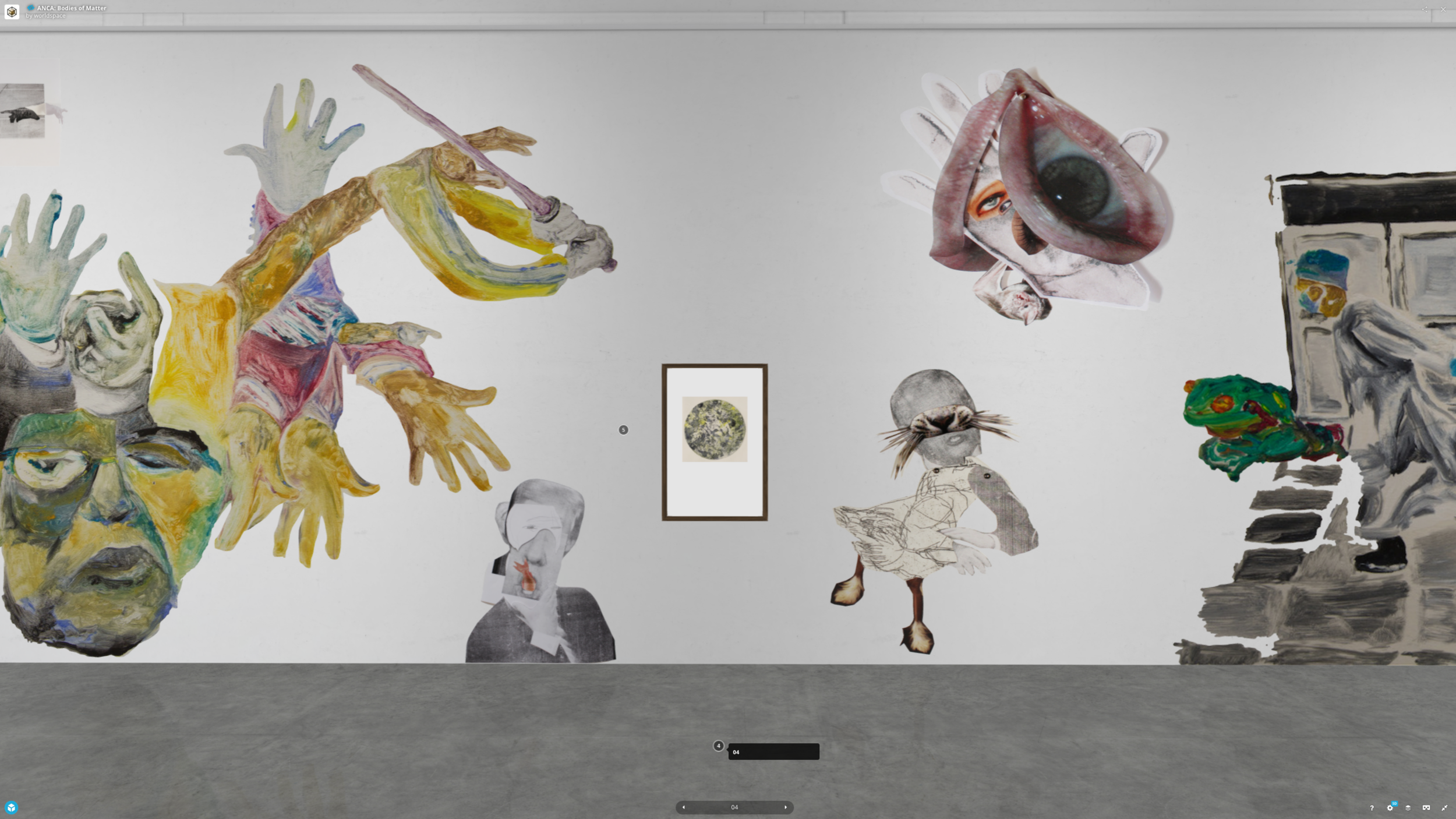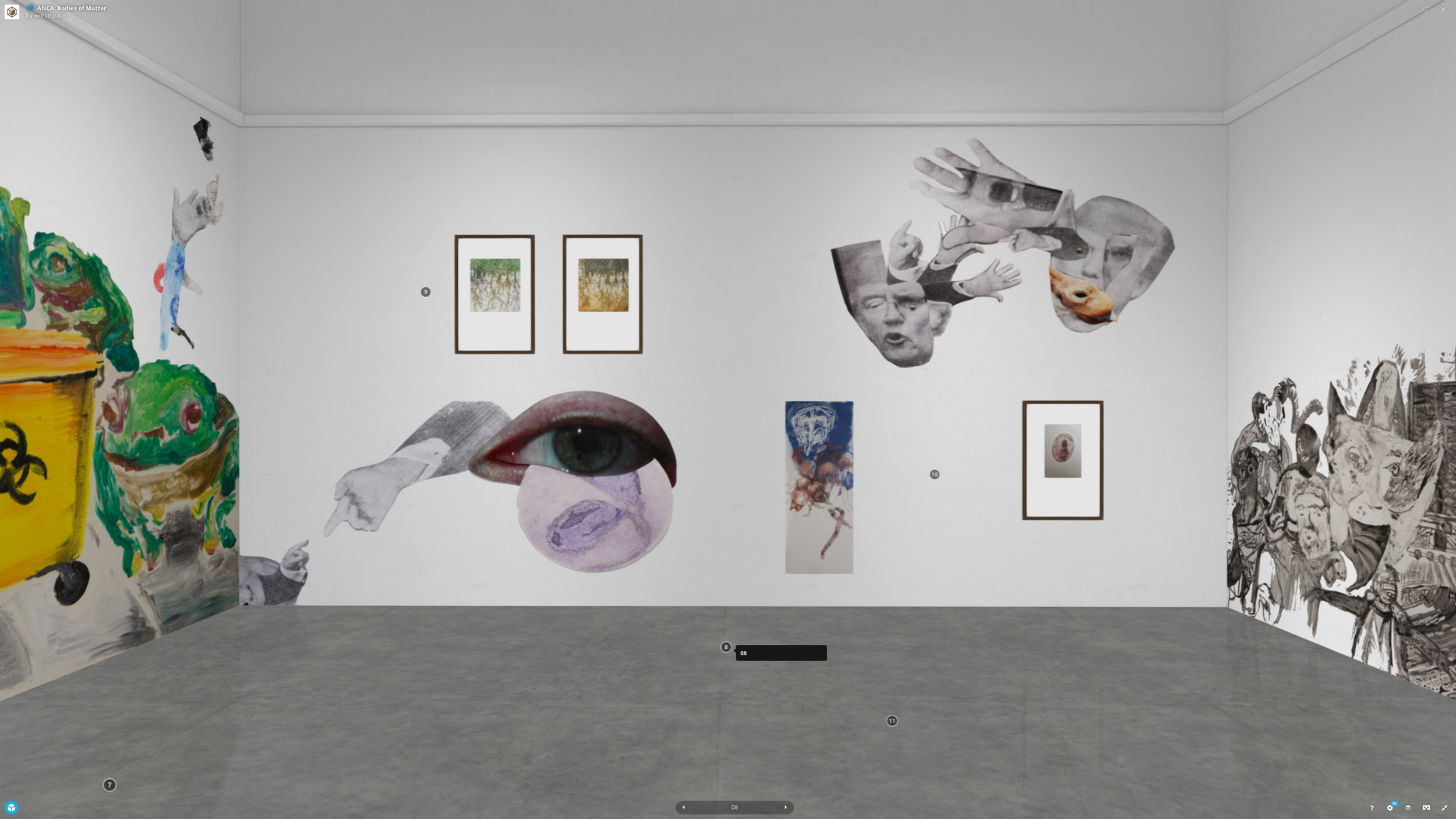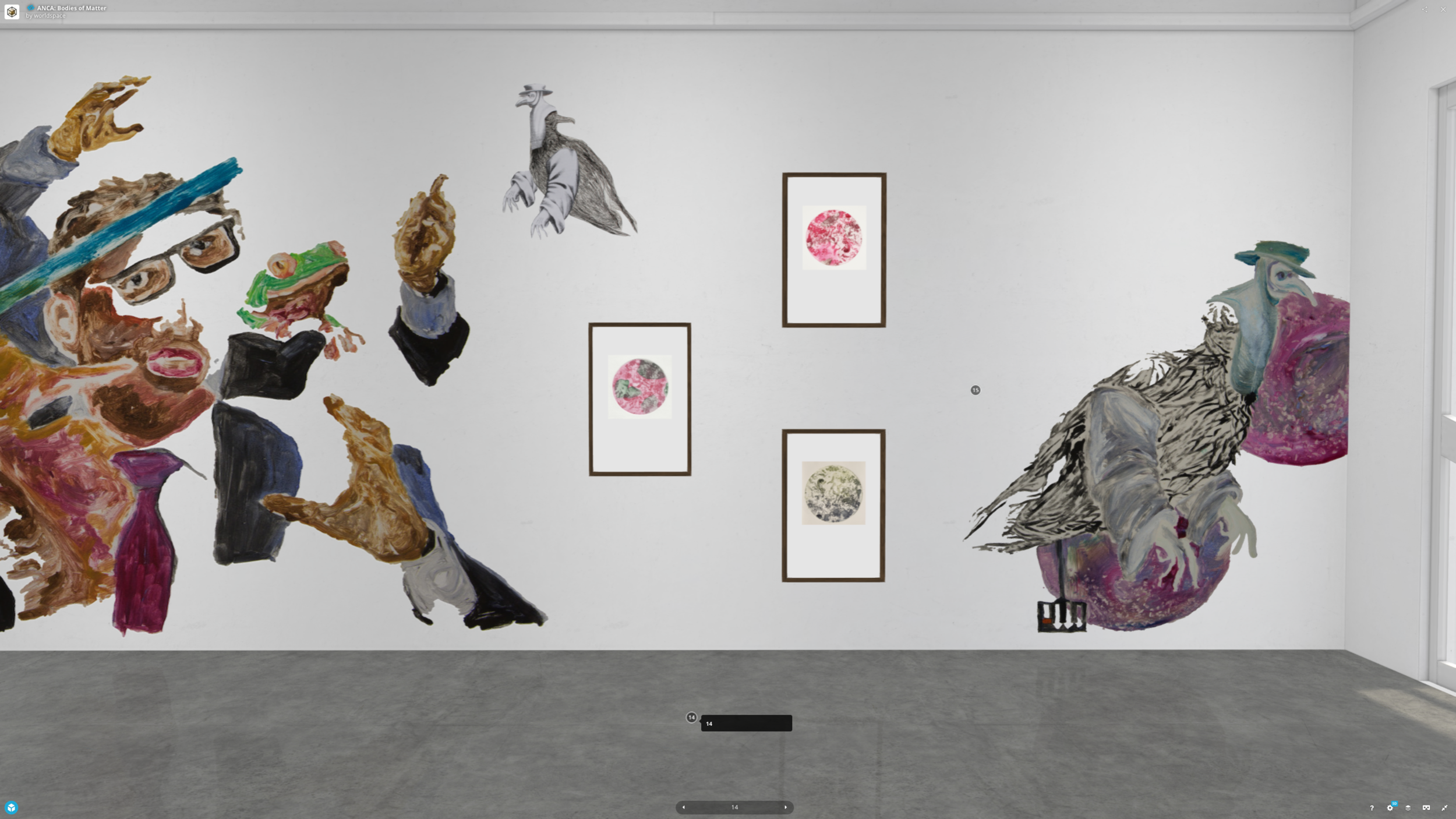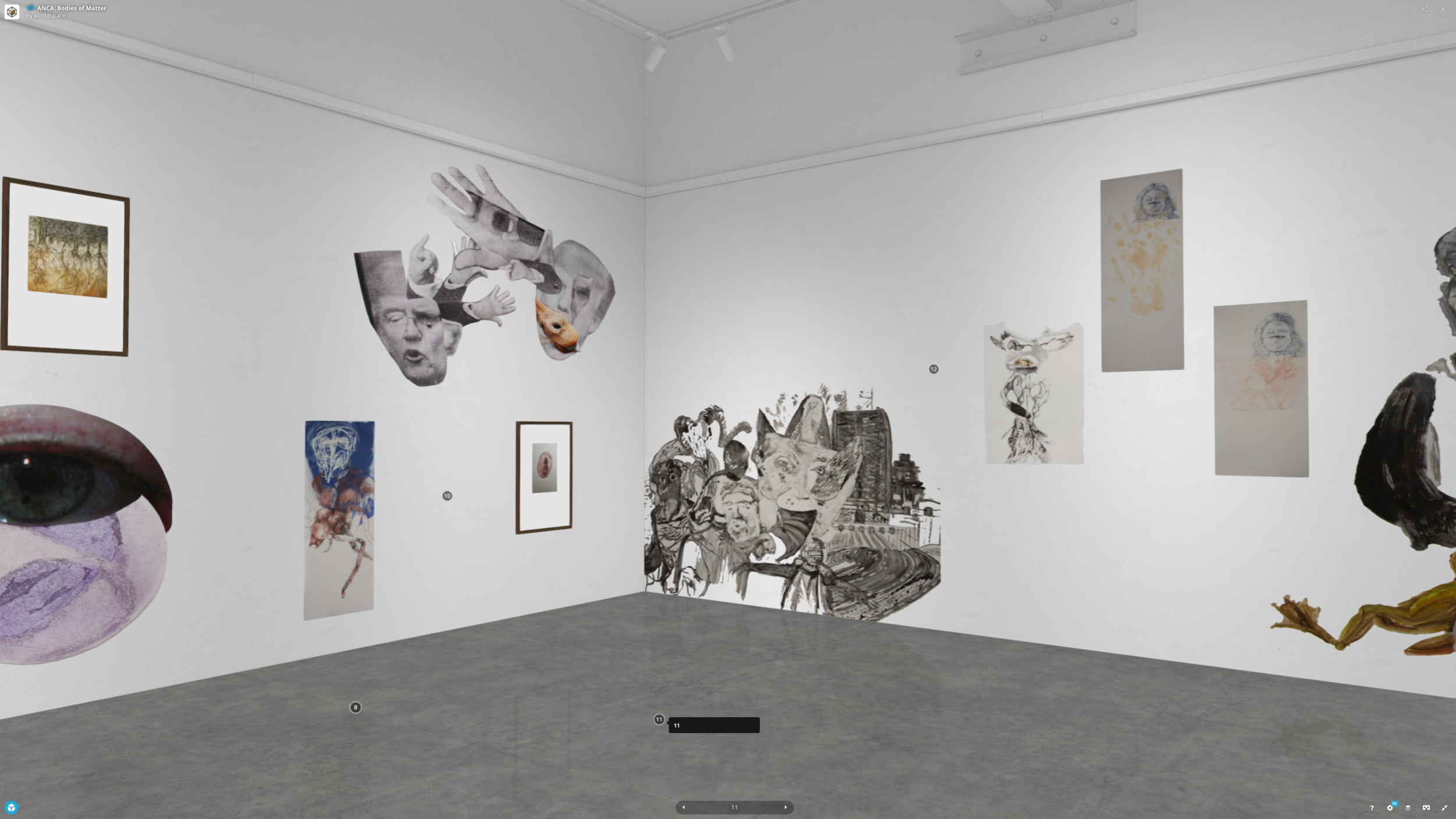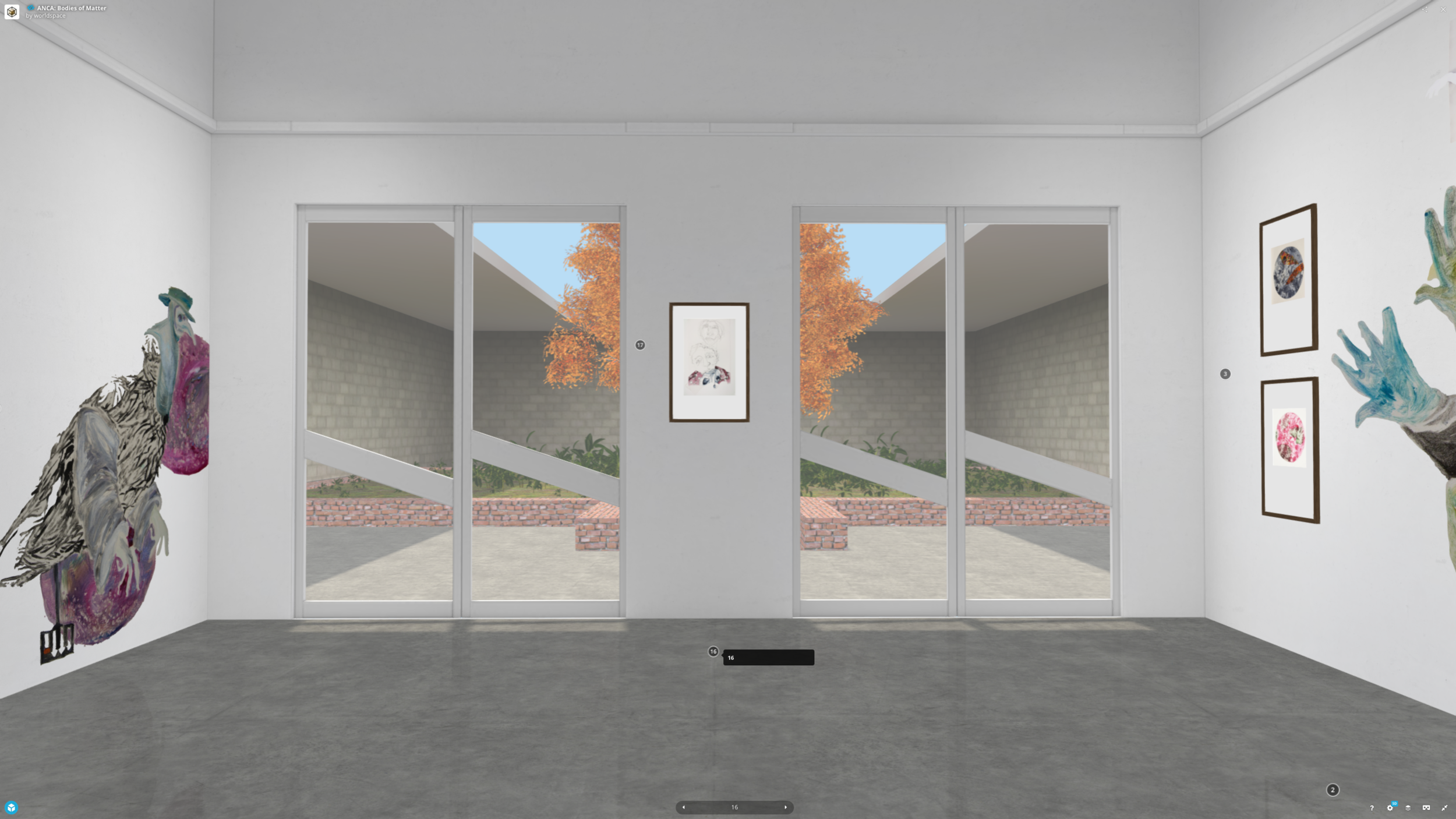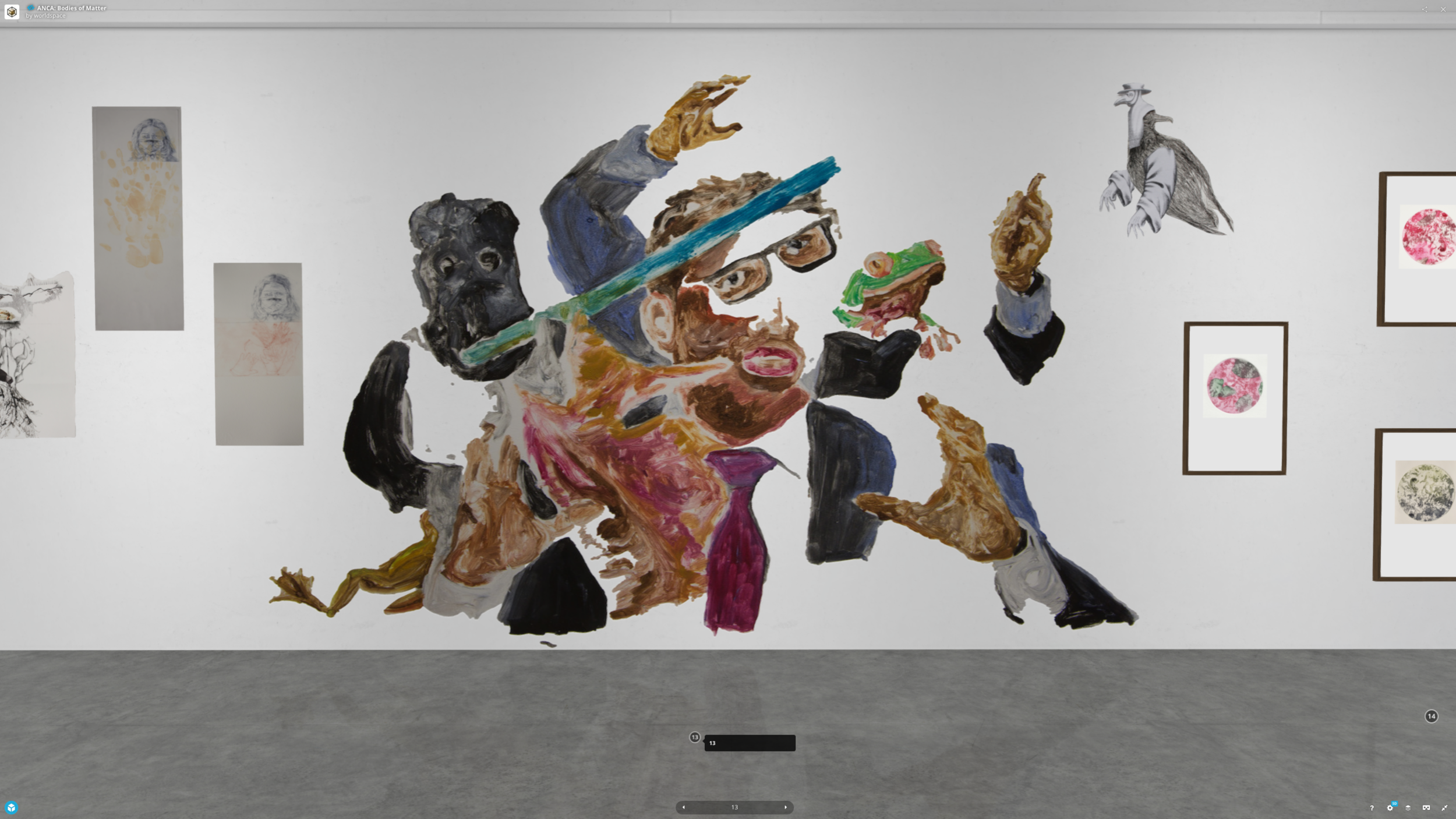As part of their collaborative digital exhibition ‘Bodies of Matter’ (on show at ANCA Gallery from 24 June to 8 July 2020), Julie Mia Holmes and Elaine Camlin spoke with Dr. Thomas A. Middlemost, Art Curator of The Charles Sturt University Art Collection about the exhibition, their practices and the impact of COVID-19.
Tom Middlemost (TM): Tell me about your art practice, has it benefitted from the current world crisis, how is it for you now, you can’t go outside…
Julie Mia Holmes (JMH): Nothing has changed all that much for me. Although I did enjoy the short enforced holiday from my casual job selling books to pay the rent. So much time to draw and think and… go outside! I went for many jogs in the nearby National Park and popping out for plein air drawing became a daily affair. A reminder of the importance of drawing in my practice, it is the beginning of all things.Now life has returned to a mirage of normality I’m desperate for that time and space back. Things seem to be running at a far greater pace, Helter Skelter! People are desperate, impatient, MAD! As artists we make work in response to the world we live in, it’s what we do. I think if I hadn’t been creating animations of Kebab Chases and drawing exquisite corpses I probably wouldn’t have any hair left... And as cliché as it sounds I think suffering does lead to better art. The show must go on!
Elaine Camlin (EC): I wouldn't say my art practice has benefited from the current world crisis, per se, but rather provided an opportunity to experiment, and playfully explore figurative works for the first time as a practising artist. When we went into lock-down, I went from working two jobs, five days a week, to only one day working from home, with several creative projects paused, and home-schooling our 5-year-old son, Eli. Watching the news, Goggling statistics, and general dread became an obsession - and a downward spiral. Within a few weeks something shifted, and like Julie I was reminded of the joy in the simple things. Spending quality (on occasion stressful) time with family, crafting, and making in response to what I was seeing, instead of letting it consume me. I think that is the best gift an artist possesses, the ability to use a project, a work, a simple doodle, or even a dot-to-dot (which we did a lot of in our house), as a platform to navigate our way through the difficult, strange times.
TM: On collaborating: What were/are the challenges? Benefits? Is distance a problem?
JMH: I’ve never had the opportunity to collaborate with another artist before so this was a new experience for me. When Elaine asked I said yes immediately. We approach printmaking in a very similar experimental way, using the same techniques – monotype, lino, etching, cyanotype. We also base our work around the environment, the macro and micro and a sense of place. It seemed like a natural thing to work together - we’re on the same page so to speak. Another wonderful thing about this project is the ongoing nature of it. It feels like an unfurling thing, a conversation just beginning.
I found working within the collaboration outside of my own practice gave me a sense of freedom. It allowed me room to experiment and play without getting too bogged down in technique and to be able to look at things with fresh eyes. In terms of challenges faced, distance and timing were the greatest. The post held things up a great deal making the dialogue between drawings and prints a bit disjointed and chaotic. It was expensive too! We found that sending photos to each other and printing them in our own studios was a much more efficient and direct way to continue the conversation. This also led to the creation of the monotypes and animations. My printer is quite old and unreliable so when I printed Elaine’s drawing and college’s they became quite distorted and pixelated. It let me abstract the forms and gave the images quite a beautiful soft blurry quality. Apart from postal issues distance didn’t get in the way too much. Praise be for phone, email and social media! We were constantly sending each other articles we’d read with ridiculous headlines, instagram posts and adding songs to a playlist we made with Covid-19 themed songs. All these elements have become a part of the conversation and the Bodies of Matter.
EC: The benefits far outweighed any challenges, and as Julie said when we identified a hurdle, we communicated through phone, social media and email - sometimes all at once! Which became very chaotic, and a little confusing, but it served us well! Our varied streams of chaotic communication, from sharing articles (whether ridiculous, confronting, humorous, concerning, or bizarre) to a collaborative Spotify playlist, provided a greater understanding of each other, and ultimately shaped the exhibition.
After seeing the call-out on social media, I thought of Julie, and our shared interests and backgrounds, and approached her with only 4 day's notice to put together the exhibition proposal. I am paraphrasing here, but I said something like "I can't scramble works together on my own, did you want to exhibit together? We could make works based on our experiences of this bloody pandemic? Collaboration COVID style!" Clearly, I sold it because we spent the Easter Long Weekend, brainstorming, laughing, stressing, brainstorming, collating, and developing a proposal for something completely foreign but, yet oddly familiar to each other.
The funny thing about distance during COVID, was that it didn't really matter whether we were 6 hours apart, or 3 minutes, because we would not have been able to share a workspace, or even visit one another during lockdown. We really didn't factor the postal delays, and expense when we developed the initial concepts of sending plates back and forth. But, from that experience the collages and then animations and monotypes were born!
TM: There is dark, topical, and observational whimsy in the animations? The worlds in a mess, and the government seems messier, tell me about the birth of the animations.
JMH: In the thick of it we were watching the news, watching the numbers rise daily, getting frustrated with unempathetic politicians who continually spoke about the economic loss rather than the human loss. And the complete lack of financial support for the arts. I was RAGING. The only way to cope with this rage was to make it seem completely ridiculous. Which wasn’t very hard. You had people getting fined for stopping for kebabs on their run, Trump telling us to drink bleach, Soccer clubs in Seoul getting fined for filling stadium seats with sex dolls… .you know the rest!
Satire seems unnecessary these days. You can’t make half this stuff up it’s just so unbelievable. I am a child of Monty Python so it’s no surprise the stop motions have that quality to them. Watching some of the Python skits today it’s like they made them yesterday, still completely relevant. The politics haven’t changed.I think the animations came out of wanting to feel a sense of control somehow. Bushfires, Floods, Covid-19 – I’ve seen it all in the past few months. We seem to think we have an element of control in our lives and this year has proved us very wrong. There’s something quite comforting about watching something fleeting, ridiculous and absurd and having the power – the luxury, to keep hitting the play button so you can watch it over and over again. It’s also how we live, scrolling obsessively to check information, growing numbers, graph spikes and curves.
The collages themselves came from the joint exquisite corpse drawings. Strange, amorphous creatures made from whatever bits of printed media paraphernalia was lying around the studio. The inclusion of animal parts and anthropomorphism is directly related to the evolution of the virus. Our disconnection of the environment is what is thought to have brought the virus into being. The lack of environment for wild animals and their interaction with us in wet markets and suburban environments. We are animals too. I think people like to forget that… it’s important to remind them.
EC: When we started making collages, it was funny that we both kinda went in separate directions. I have Monday's child free to print in my studio, so I just wanted to launch in with some painterly monoprints - using the media images and collages as a starting point. Julie would send some quirky little animations as she was developing them, they made me laugh, us laugh together. It was therapeutic to put all the pieces together, fragments of what we have been seeing, and mashing them together in bizarre ways.
TM: What are the limitations, and or benefits of the digital platform for exhibition? Is scale of work changed/challenged…
JMH & EC: The digital platform was a lifeline in terms of COVID19 and gallery closures. It was a way to have an exhibition without any limitations on the amount of people able to view the work. We didn't have to worry about the constant changes to legislation regarding social distancing or virus outbreaks, and it gave us something solid and unchanging to work towards. It’s also a wonderful thing for us as regional artists, working in two different areas; everyone can see it without having to travel. You can view the exhibition at anytime, anywhere, with the click of a button!It was fantastic to have no limitations on scale.
As printmakers making larger work is tough! So much physical labour, increased cost in materials, and the technical limitations of a press bed! So to be able to make something quite small and have it fill a whole gallery wall is complete wizardry! It was fabulous to work in such an intimate manner, but have the work come to life, paste-up style! Filling the walls like politically driven graffiti - without the risk of receiving a hefty COVID fine for a non-essential outing!
In terms of audience it’s interesting to think of how most people will view the exhibition. We aren’t able to control the scale of how people are viewing the show – larger monitor screens, iphones, tablets – some viewers might be happy moving around the periphery while others may want to zoom in to have a more intimate experience. Our lack of knowledge in terms of technology made it a little challenging, we are old-school paper folk! However, with the help of friends and YouTube we stumbled through and then completely relied on the expertise and guidance of ANCA gallery staff. The support was wonderful and the whole experience amazing, despite our limitations, Ren and his team just magically brought our 'bodies of matter' to life!
Title image: Julie Mia Holmes and Elaine Camlin, Body of Matter, 2020. 14.5 cm diameter, paper size 30 x 21 cm. Unique State. Etching with Softground and spit bite. Photo by Julie Mia Holmes.
See below for installation images of Bodies of Matter.
